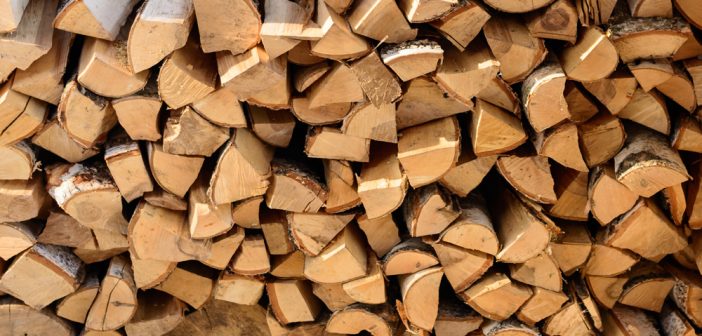Exhilarating crisp winds and the sweet smell of freshly fallen leaves have come again. Before it gets too cold out, it’s important to service your wood burning stoves and fireplaces, which means it’s time to attend to your fuel needs.
Firewood is an excellent home-heating choice for anyone who’s ready to be energy independent from big utility companies or those who simply live too far away from a municipality to receive services. If wood is the primary heat source for your home, you don’t always have the luxury of turning to an energy company for help, that’s why storing your wood properly matters. Follow these best-practice tips to help you get the most out of your firewood, ensuring a stable, quality supply for as long as the winter drags on.
Green and Seasoned Wood: What’s the Difference?
Wood that has been cut recently and still contains most of its water content is referred to as “green”. This wood burns poorly because it is using too much energy burning off the extra moisture. Wet fuel sources like this can increase the creosote build-up in your chimney, risking dangerous house-fires.
“Seasoned wood” has been stored long enough in conditions which allow the water to naturally evaporate away. This wood burns longer and hotter while being less likely to succumb to rot. Because of the length of time it takes wood to season, it is integral that you plan ahead. Different wood types can take different lengths of time to season so you need to take that into consideration when deciding what time of the year you’re going to begin harvesting lumber. Splitting harvested wood before storage can decrease the amount of time it takes to season (it exposes the inner tissues to sources of decay.) Properly store your wood in order to preserve your investment.
Where Your Stack Matters
Avoid stacking wood in a shaded area, unless you live in a very low-humidity environment. It is best to make sure you place your firewood in a location that gets plenty of sun. Leave the shed doors open facing the afternoon sun if you choose to store it that way. Ideally, you should build an open-walled, covered hut to allow rainwater to sheet off. Use a tarp to cover it (as long as it’s elevated off the pile) so it does not inhibit air flow.
Do not store wood inside the house. Green wood will not season well indoors; it can attract mold and fungi which are respiratory irritants that will impact your health over time. Insects also like to burrow in the softer, wetter wood and will find your home as pleasant as you do. Well-seasoned wood can be moved to an indoor storage location for easy access, just don’t keep more than a week’s worth inside.
Keep Your Wood Off the Ground
One of the best pieces of advice you can follow is to keep your wood off of the bare ground. The soil is naturally damp and rain and snow-melt can easily pool around your supply. These moisture sources will prevent the green wood from seasoning, and cause already seasoned wood to take up water and rot. Investing in sturdy shelving units, drying racks, or simply stacking your pile atop well-made palates will keep your fuel up off the ground, preventing these issues.
Air-Flow
It may be tempting to try and fit your firewood into your storage space as tightly as you can. However, doing this will insulate the wood and prevent it from properly drying out. You need to stack the wood so there is proper air-flow to avoid humidity which builds up around the wood as the water evaporates. Allowing for space between pieces will ensure that your valuable fuel source seasons in time.
Do Not Stack Too High
Make sure that safety comes first when you are building your pile. Do not build your stack above 4 feet in height or above your own shoulder height, this way you won’t have to lift heavy loads above your head. This also will help prevent injuries if a pile collapses.
Purchase Green Wood
While good practices provide a secure supply of firewood, sometimes things can go wrong. You may miss the ideal harvest time for the variety of wood you have access to. Flooding might have occurred, wetting your pile and rotting your supply. Whatever the reason is, it wise to know where you can purchase a steady supply of wood incase an unfortunately incident occurs. Green wood can be purchased inexpensively and seasoned early on in the year.
Plan ahead and store your wood off the ground. Stack with consideration for sun exposure and air-flow. If you follow these tips you will have a supply of well-seasoned wood that will keep you warm all winter long.








